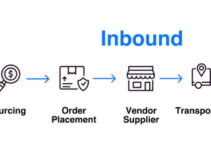Burberry Group PLC is a luxury fashion house retail chain multinational brand. Thomas Burberry founded the company in 1856. Today, we’ll discuss the value chain analysis of Burberry supply chain analysis; primary and supporting activities in the process of value chain analysis Example Company. They are inbound and outbound logistics, operations, marketing, and customer service; infrastructure, HRM, technology, and procurement as an application of the value chain analysis process.
Substitutes of Burberry
- Hermes
- Salvatore Ferragamo S.p.A
- Bergdorf Goodman
- Tommy Hilfiger
- Gucci
- LVMH
- Prada
- Yves Saint Laurent
- Dior
- Billabong
- Armani
The Value chain analysis of Burberry supply chain analysis would analyze the primary and supporting activities in the process of value chain analysis. They’re inbound and outbound logistics, operations, marketing, and services; infrastructure, HRM, technology, and procurement. Here’s the supply chain analysis of BURBERRY value chain analysis company example as follows;
Value Chain Analysis of Burberry
Let’s discuss the primary and supporting activities involved in the process of value chain analysis of Burberry supply chain analysis. It is an application of value chain analysis based on Porter’s model; some of the key elements and components of value chain analysis are as follows;
Primary Activities of Burberry
Some of the five main primary activities in the value chain analysis of Burberry supply chain analysis are as follows;
Inbound Logistics of Burberry
I-Large Suppliers’ Network
Burberry has established a very large supplier network in various countries across the globe. In fact, the luxury fashion brand is highly transparent and visible about its suppliers and vendors network to make sure that the company is not exploiting workers. Some of the main suppliers of the fashion brand in different countries and their percentage of contribution are as follows;
- Italy – 64%
- UK – 4%
- Europe – 16%
- Asia – 16%
The luxury fashion brand Burberry deals with multiple types of suppliers and vendors. Some of them provide raw materials and the others provide finished goods to manufacturing units; they’re as follows;
- Raw material suppliers – 52%
- Finished goods manufacturers – 30%
- Finished goods vendors – 18%
II-Ethical and Sustainable Sourcing
Burberry is highly cautious about ethical, responsible, and sustainable sourcing of raw materials and supplies. The fashion brand makes sure that its suppliers and vendors are engaging in sustainable practices while sourcing the raw materials and supplies. However, the luxury fashion brand sources different types of material from different countries worldwide and they’re as follows;
Leather accessories
- Europe – 89%
- Italy – 11%
Cashmere scarves
- UK – 70%
- Italy – 30%
Rainwear
- Asia – 12%
- Europe – 26%
- Italy – 8%
- UK – 54%
Outbound Logistics of Burberry
I-Distribution Channels
Burberry employs various distribution and transportation channels to distribute finished products from the manufacturing and production facilities to the retail stores and wholesale points. The luxury fashion brand takes care of various elements while performing the outbound logistics, and they’re as follows;
- A service agreement with the logistics suppliers
- Product compliance and portability checks
- Value-added services like labeling and pricing
- Variability transit times
- Security issues
Operations of Burberry
I-Designing
When it comes to the latest beautiful luxury fashion designs and trending styles, Burberry collaborates and coordinates with various fashion designers in-house and externally. The company does so in the earlier stages of product development to make sure that its marketing, design, and products are aligned with the sustainable strategy of the company.
II-Production & Manufacturing
Along with dealing with suppliers worldwide, Burberry has set up its own production and manufacturing units in Italy and the UK. The focus of the luxury fashion brand is to produce high-quality products for the customers and continuously improve its processes. The luxury brand is aware of the impact of its production practices on the environment, and it focuses on the following;
- Decreasing the environmental impact
- Recycling and reusing the waste
- Investing the innovative and creative production solutions
- Engaging in the circular business model
Marketing & Sales of Burberry
I-Multiple Channels
Burberry employs various media channels for the promotion and advertisement of its luxury fashion products and brand image. They are like TV, billboards, fashion magazines, print ads, and online ads. However, the company also invests a significant amount of resources in digital and social media channels to strengthen its brand image and brand position in the market.
II-Celebrity Endorsement
Burberry hires various media celebrities and public figures for the promotion of its fashion products and brand name. Some of those celebrities are Agyness Deyn, Kate Moss, and others. They have a very large following and their endorsement of the particular design amplifies the company’s sale.
Services of Burberry
I-Personalization
Burberry is a luxury fashion brand and the company allows its fashion-loving customers to have their own fully customized and personalized apparel produced only for them. It allows them to choose and pick fashion things for their attire and clothing.
II-Aftercaring
Burberry also allows its customers to have customized fitting and alteration in the readymade clothes. Customers could select the fashion luxury dress and make it adjusted and altered relevant to their physique and figure by the luxury fashion brand.
Supporting Activities of Burberry
Some of the main supporting activities in the value chain analysis of Burberry supply chain analysis are as follows;
Infrastructure of Burberry
Burberry has established a very large and strong infrastructure of production and manufacturing facilities, raw material sourcing, suppliers and vendor networks, and distribution and transportation channels. Well-developed infrastructure foundation allows the luxury fashion brand to perform its various operations smoothly without any disruptions.
HRM of Burberry
Burberry has employed approximately 9000 employees to manage its global luxury fashion operations and processes. The human resources management department of the fashion brand plays a critical role in creating a diverse workplace environment that focuses on promoting innovation and creativity. Since the luxury brand is operating its business in the fashion industry, innovative and creative designs allow it to gain a competitive edge.
Technological Development of Burberry
Burberry invests a significant amount of capital resources in technological development and employing the latest technology in its production and manufacturing units. It allows the luxury fashion company to efficiently perform its operations, timely designing and manufacturing fashion clothes, and delivering them to the retail stores.
Procurement of Burberry
Burberry is highly careful about ethical and sustainable sourcing of raw materials and supplies from suppliers, producers, and vendors across the world. The company has set up clear guidelines and rules for suppliers to comply with human rights and sustainable practices to keep working with the retail fashion brand.
Conclusion: Burberry Value Chain Analysis Example Company | Application of Value Chain Analysis Process
After an in-depth study of the value chain analysis of Burberry; we have realized that Burberry is the world’s leading fashion retail chain brand. If you are learning about the Burberry value chain analysis example company; then you should keep in mind the abovementioned primary and supporting activities. They’re inbound and outbound logistics; operations, marketing and sales, and services; infrastructure, procurement, HRM, and technological development as an application of the value chain analysis process.
Ahsan is an accomplished researcher and has a deep insight in worldly life affairs. He goes Live 3 days a week on various social media platforms. Other than research writing, he’s a very interesting person.


